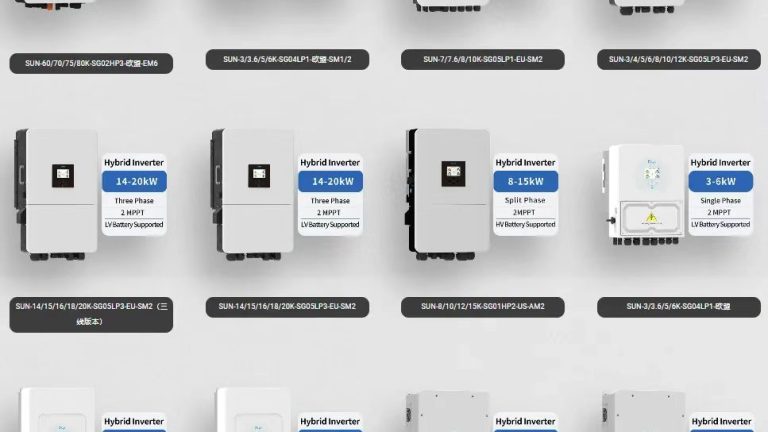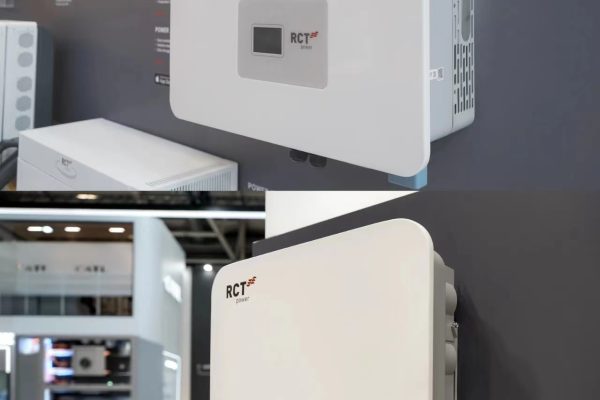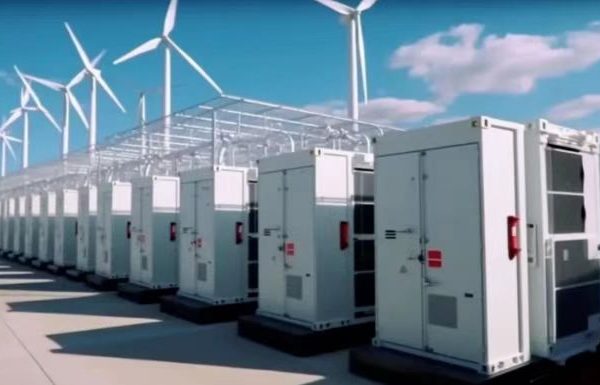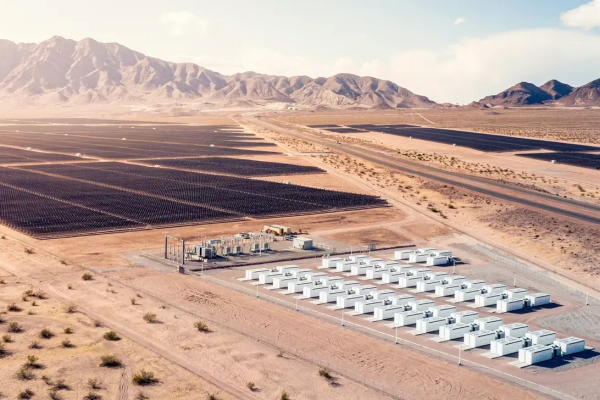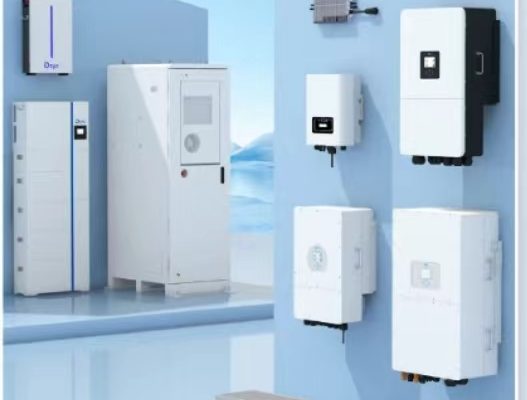What Every System Buyer Should Know About Conversion Losses
When planning a solar or storage system, the spotlight often falls on PV panel wattage or battery capacity. But there’s a quieter variable in the background — inverter efficiency — that can significantly affect your energy yield, system sizing, and long-term ROI.
In this article, we’ll explore:
- What inverter efficiency really means
- How it affects usable energy in solar + storage systems
- The real-world differences between 93% and 98% efficiency
- Factors that impact efficiency in daily use
- When it makes sense to pay more for higher efficiency
What Is Inverter Efficiency?
At its core, inverter efficiency refers to how much of the input energy (from solar panels or batteries) is successfully converted into usable AC power for loads or export.
Basic Formula:
Efficiency (%) = (AC output / DC input) × 100
If an inverter receives 1000W DC from PV and outputs 950W AC, the efficiency is 95%.
But this efficiency number is not constant. Most manufacturers publish two values:
- Peak Efficiency: The highest conversion efficiency achievable, usually at optimal load
- European Efficiency / Weighted Efficiency: A realistic average across a typical daily load profile
Why It Matters
Even small differences in inverter efficiency can lead to significant cumulative losses over time — especially in systems with high utilization.
Let’s look at an example:
| Scenario | Inverter A | Inverter B |
|---|---|---|
| Peak Efficiency | 93% | 98% |
| PV Input | 10,000 kWh/year | 10,000 kWh/year |
| AC Output | 9,300 kWh | 9,800 kWh |
| Energy Loss | 700 kWh | 200 kWh |
| Revenue Loss (at $0.12/kWh) | $84/year | $24/year |
Over 10 years, this efficiency gap translates into $600 more earnings with Inverter B — not counting better battery utilization.
In Storage Systems: Losses Compound
In hybrid or battery-inverter systems, multiple conversions take place:
- PV DC → Battery DC (via hybrid inverter)
- Battery DC → AC loads
Each step introduces conversion loss. For example:
- Charging efficiency: 95%
- Discharging efficiency: 94%
- Inverter AC efficiency: 96%
Cumulative efficiency:0.95 × 0.94 × 0.96 = ~85.6%
This means only 856 Wh of each 1000 Wh generated is delivered to the AC loads.
👉 A less efficient inverter could lower this even further — wasting usable energy and reducing effective battery capacity.
Where Efficiency Losses Happen
Understanding the internal stages of an inverter helps explain where losses occur:
- DC-DC Conversion (MPPT regulation or battery charging)
- DC-AC Inversion
- Transformer / Filtering
- Cooling / Internal Consumption
- Standby Load / Night Mode Draw
Each of these elements consumes energy as heat or idle power.
Partial Load Efficiency: The Real World Challenge
While most inverters advertise peak efficiency at ~80% loading, many systems operate at low or variable loads, especially in:
- Off-grid homes at night
- Homes with low base loads
- Light commercial systems on weekends
Here’s the catch:
Some inverters drop to 85–90% efficiency at 10–20% load. That adds up over time.
Real-Life Tip:
Look for the efficiency curve in inverter datasheets — not just the peak number. A flatter curve means better performance at partial loads.
Case Study: 5kW System with 96% vs 99% Inverter
Let’s compare two systems:
| Metric | System A | System B |
|---|---|---|
| Inverter Efficiency | 96% | 99% |
| PV Output | 8,000 kWh/year | 8,000 kWh/year |
| Usable AC | 7,680 kWh | 7,920 kWh |
| Annual Loss | 320 kWh | 80 kWh |
| Financial Impact (0.15 USD/kWh) | $48/year | $12/year |
| Over 10 Years | $480 | $120 |
And this is before considering battery round-trip losses.
High-Efficiency Inverter Technologies
Modern inverters reach 97–99% efficiency thanks to:
- Silicon Carbide (SiC) MOSFETs: Lower switching losses
- Transformerless Design: Less heat, lighter build
- Advanced MPPT algorithms: Faster PV tracking
- Low standby consumption (<1W)
But these come with trade-offs:
| Feature | Benefit | Limitation |
|---|---|---|
| High Frequency Switching | Better control, smaller size | EMI noise, heat |
| Transformerless | Higher efficiency | No galvanic isolation |
| SiC Devices | Lower heat loss | Higher component cost |
When Should You Prioritize Inverter Efficiency?
Not every project needs a 99% inverter. It depends on:
✅ Prioritize High Efficiency When:
- System is used daily, year-round
- Grid export value is high (net metering, FiT)
- Inverter runs near full load often
- You’re stacking with batteries (avoid double losses)
- Climate is hot (lower losses = less heat)
❌ Efficiency May Be Lower Priority When:
- You need a cost-effective basic backup
- System runs only occasionally (e.g., cabins)
- Partial load performance is poor anyway
- You’re more constrained by battery size, not inverter
How to Check and Compare Inverter Efficiency
Before purchasing:
- Request full efficiency curve from the supplier
- Check European or California weighted efficiency
- Compare standby consumption for hybrid/ESS inverters
- Use independent test results (TÜV, PVEL) where available
- Ask about real-world efficiency with specific battery brands
Questions Clients May Ask (Prepare These Answers):
- “Will I get more energy if I choose a more efficient inverter?”
✔ Yes — especially in high-utilization or grid-export scenarios. - “Is a 2–3% efficiency difference really worth the cost?”
✔ It can be. Over 10 years, the extra yield may justify a higher upfront price. - “How much energy do I lose when storing in batteries?”
✔ Roughly 10–20% depending on inverter and battery losses. - “Do efficient inverters overheat more?”
✔ Actually, no — higher efficiency means less heat to dissipate.
Summary: Energy Efficiency Pays Off
Inverter efficiency isn’t just a spec — it directly impacts:
- Your usable solar energy
- How hard your battery works
- Your long-term returns
- Cooling, noise, and component stress
Even small efficiency improvements can generate real-world gains, especially for grid-tied, daily-use, or hybrid systems.
As a buyer, installer, or technical trader, choosing the right inverter means going beyond brand and wattage — and paying attention to conversion performance across the full load curve.





